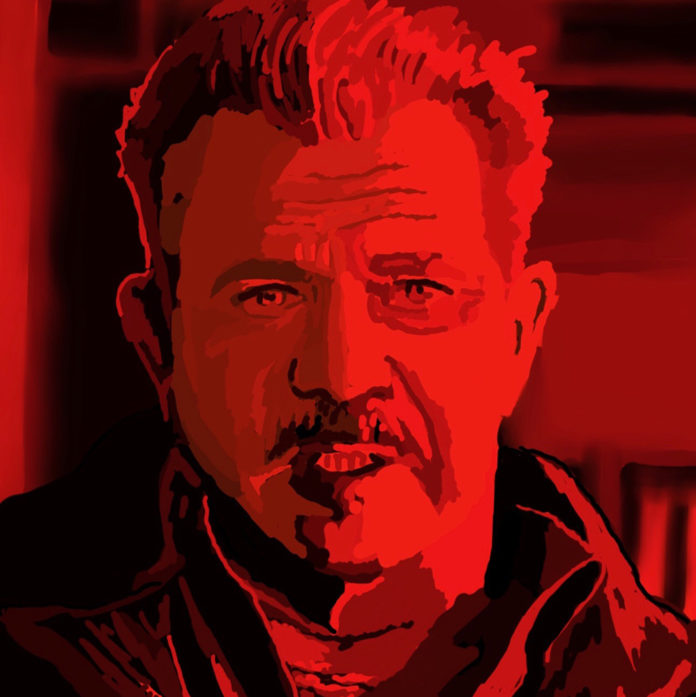S. Craig Zahler’s films have the physicality and sensation of rock and roll meets rap music. Before he directed his first picture, “Bone Tomahawk,” the 46-year-old auteur was a drummer in the heavy metal bands Charnel Valley and Realmbuilder. Zahler transfers this feeling for rhythm into focused but feral exploitation films. In 2017, his movie “Brawl in Cell Block 99” dramatized the experiences that take place around and within ex-boxer Bradley Thomas. When Thomas, played by Vince Vaughn, smashes his car with bare fists, we see streaks of blood and hear shattering glass, but the stoicism and awareness of his calculated demeanor contradict this image of rage. Short-tempered characters reveal the internal process of emotion leading to action, and action is well-embedded into Zahler’s idea of personality. His new film “Dragged Across Concrete” is about three men of different ethnic backgrounds and generational temperaments who are trying to justify wrongs for the common reward of providing for family. At 159 minutes, this methodical thriller burns with an old school fever.
“Dragged Across Concrete” is anything but relaxing. Mel Gibson and Vince Vaughn star as disgruntled police officers Ridgeman and Lurasetti, who propel themselves into personal and financial plight after a video of them enacting excessive force on a drug-dealing perp goes viral. The partners grumble about their suspension and its resulting lack of income before deciding to prowl a crew of sadistic bank robbers. Ex-con Henry Johns, played by Tory Kittles, joins the masked thieves in an attempt to lift his mother out of poverty and sponsor his teenage brother’s dream of designing video games and attending college. Through these protagonists, Zahler hones in on how frustration compels and controls intention, opening each man up to manipulation and corruption. His dialogue reflects the tension of compromise and competition in American culture, not just American politics. When their police chief delivers the bad news, he tells Ridgeman, “You get results. But you’re losing perspective and compassion.” This line is prophetic and it diagnoses the paranoia behind Ridgeman’s aggression. On the other side of the city, Johns plays a video game with his brother called “Shotgun Safari” in which the two creep through a desert fraught with predatory animals. The final song on the film’s accompanying soundtrack goes by the same name and is performed by 1970s R&B group The O’Jays. Shotgun Safari is a game of the hunter and the hunted where survival becomes the tense undercurrent dragging these men toward fate. It reflects a competitive and adversarial hierarchy that crime fiction cinema has recently cowered from.
The critical condemnation of “Dragged Across Concrete” misunderstands the film’s finale and what it reveals about each man. The LA Times calls it “glib provocation” while the New Yorker says it “hits the trifecta of racism, sexism, and nativism.” Zahler is accused of responding to Hollywood’s phobia of dissent with nothing but reactionary “trolling.” It should be no surprise that the dialogue of police officers turned criminals is inflammatory to the codes of upper-class culture. A character’s frustration does not have to be validated, but it does have to be conveyed in an engaging and believable way. When Scorsese thrilled the public with “Wolf of Wall Street” he wasn’t encouraging them to emulate Jordan Belfort. The imperfect aspects of a protagonist serve to chronicle character development and impose conflict on the narrative.
Zaher presents wit in moral dilemmas instead of the ubiquitous smirking sarcasm in the Tarantino style. Tarantino is excused of his exploitation and is, in turn, praised because of his courage to sculpt villains out of Nazis and slave owners. He is certainly not the first artist to produce work that labels those groups abhorrent. Tarantino’s films cross the same rhetorical lines as Zahler’s but the former is excused because his villains fall on the wrong side of history. The latter is causing cultural anxiety because his latest films are firmly rooted in the complicated present and the historical consequences of its fictional characters are unknown.
This brand of criticism does not help an audience connect visual narrative to genuine meaning. It merely sounds an alert for moral ambivalence and takes stock of how the film might be socially mediated. The contradictions that Zaher assigns to his characters represent their shared sentiment that in the trials of the Shotgun Safari, it is better to be ignorant than incompetent. I don’t see how one could finish this film and conclude that Zahler gives Ridgeman and Lurasetti a redemptive storyline and plot arc. When Johns tells Ridgeman, “It’s good to be underestimated,” he reveals how awareness and patience help him survive in a society that overlooks his intelligence. The film’s ending validates this claim and it shows how paranoia creates a self-fulfilling prophecy of destruction. “Dragged Across Concrete” is a patient but powerful work that shows a spectrum of belief systems and world views. The contradictions within these belief systems belong to the characters and are not evidence of a disingenuous agenda on the part of the director. They are evidence that Zahler is an artist who has his finger on the pulse of serious crime fiction.
![]()



































